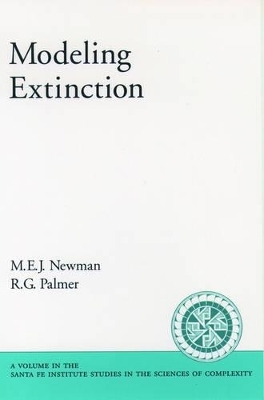
Modeling Extinction
Seiten
2003
Oxford University Press Inc (Verlag)
978-0-19-515946-2 (ISBN)
Oxford University Press Inc (Verlag)
978-0-19-515946-2 (ISBN)
Statistical paleontology is an approach to the examination pattern of the evolution and extinction in the fossil record. It looks at large-scale patterns in the record and attempts to understand and model their average statistical features, rather than their detailed structure. This book comments critically on the various modeling approaches.
Developed after a meeting at the Santa Fe Institute on extinction modeling, this book comments critically on the various modeling approaches. In the last decade or so, scientists have started to examine a new approach to the patterns of evolution and extinction in the fossil record. This approach may be called "statistical paleontology," since it looks at large-scale patterns in the record and attempts to understand and model their average statistical features, rather than their detailed structure. Examples of the patterns these studies examine are the distribution of the sizes of mass extinction events over time, the distribution of species lifetimes, or the apparent increase in the number of species alive over the last half a billion years. In attempting to model these patterns, researchers have drawn on ideas not only from paleontology, but from evolutionary biology, ecology, physics, and applied mathematics, including fitness landscapes, competitive exclusion, interaction matrices, and self-organized criticality. A self-contained review of work in this field.
Developed after a meeting at the Santa Fe Institute on extinction modeling, this book comments critically on the various modeling approaches. In the last decade or so, scientists have started to examine a new approach to the patterns of evolution and extinction in the fossil record. This approach may be called "statistical paleontology," since it looks at large-scale patterns in the record and attempts to understand and model their average statistical features, rather than their detailed structure. Examples of the patterns these studies examine are the distribution of the sizes of mass extinction events over time, the distribution of species lifetimes, or the apparent increase in the number of species alive over the last half a billion years. In attempting to model these patterns, researchers have drawn on ideas not only from paleontology, but from evolutionary biology, ecology, physics, and applied mathematics, including fitness landscapes, competitive exclusion, interaction matrices, and self-organized criticality. A self-contained review of work in this field.
Preface ; 1. Extinction in the Fossil Record ; 2. Fitness Landscape Model ; 3. Self-Organized Critical Models ; 4. Interspecies Connection Models ; 5. Environmental Stress Models ; 6. Non-equilibrium Models ; 7. Summary ; References ; Index
| Erscheint lt. Verlag | 27.3.2003 |
|---|---|
| Reihe/Serie | Santa Fe Institute Studies on the Sciences of Complexity |
| Zusatzinfo | numerous figures |
| Verlagsort | New York |
| Sprache | englisch |
| Maße | 235 x 162 mm |
| Gewicht | 213 g |
| Themenwelt | Naturwissenschaften ► Biologie ► Evolution |
| ISBN-10 | 0-19-515946-2 / 0195159462 |
| ISBN-13 | 978-0-19-515946-2 / 9780195159462 |
| Zustand | Neuware |
| Informationen gemäß Produktsicherheitsverordnung (GPSR) | |
| Haben Sie eine Frage zum Produkt? |
Mehr entdecken
aus dem Bereich
aus dem Bereich
Komplette Neuübersetzung. Mit einem Nachwort von Josef H. Reichholf.
Buch | Hardcover (2018)
Klett-Cotta (Verlag)
48,00 €


